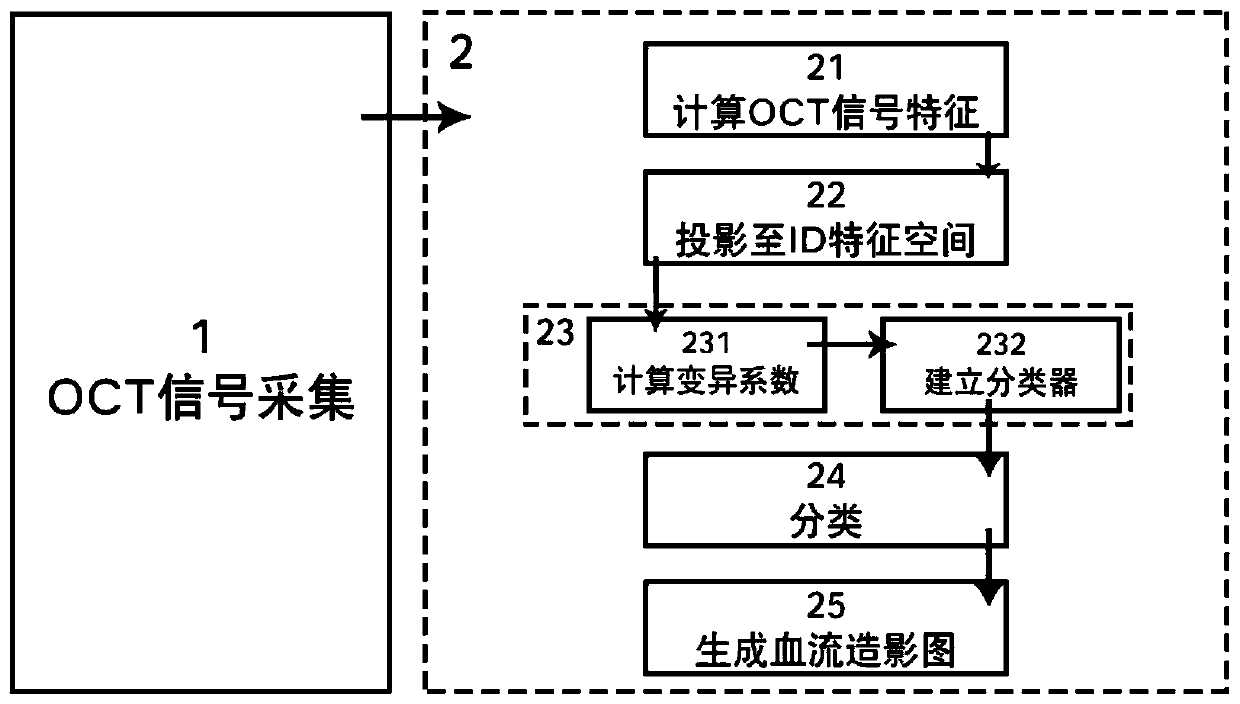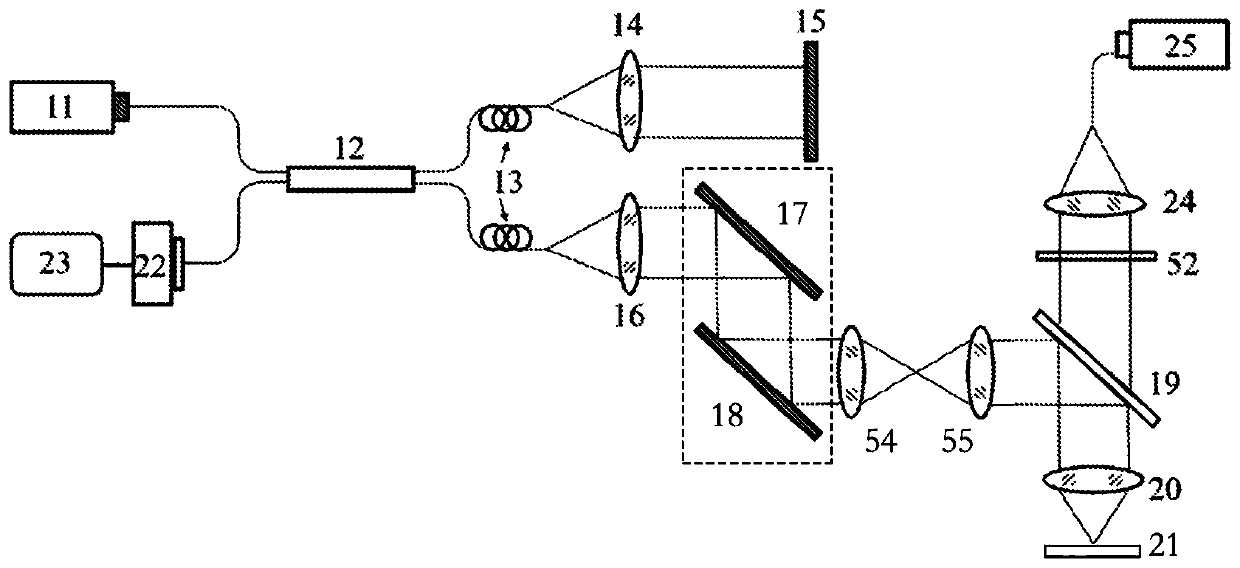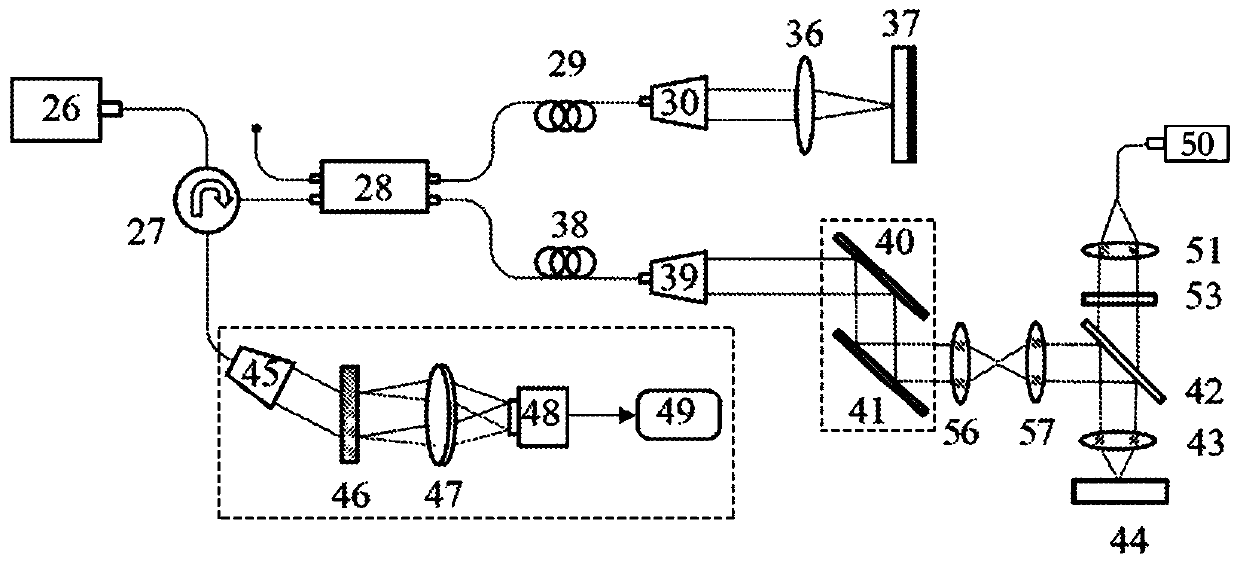Three-dimensional flow radiographic method and system based on optical coherence tomography of feature space
An optical coherence tomography and feature space technology, applied in the field of biomedical imaging, can solve the problems of high classification error rate, low motion contrast, lack of theoretical support, etc., to achieve the effect of improving quality and eliminating the influence of motion artifacts
- Summary
- Abstract
- Description
- Claims
- Application Information
AI Technical Summary
Problems solved by technology
Method used
Image
Examples
Embodiment Construction
[0076] The specific embodiment of the present invention will be described in detail below in conjunction with accompanying drawing, and accompanying drawing forms a part of the present invention. It should be noted that these descriptions and examples are illustrative only, and should not be construed as limiting the scope of the present invention. The protection scope of the present invention is defined by the appended claims, and any changes based on the claims of the present invention are It is the protection scope of the present invention.
[0077] Embodiments of the present invention are as follows:
[0078] In order to facilitate the understanding of the embodiments of the present invention, each operation is described as a plurality of discrete operations, but the order of description does not represent the order of implementing the operations.
[0079] In this description, the x-y-z three-dimensional coordinate representation based on the spatial direction is used for...
PUM
 Login to View More
Login to View More Abstract
Description
Claims
Application Information
 Login to View More
Login to View More - R&D
- Intellectual Property
- Life Sciences
- Materials
- Tech Scout
- Unparalleled Data Quality
- Higher Quality Content
- 60% Fewer Hallucinations
Browse by: Latest US Patents, China's latest patents, Technical Efficacy Thesaurus, Application Domain, Technology Topic, Popular Technical Reports.
© 2025 PatSnap. All rights reserved.Legal|Privacy policy|Modern Slavery Act Transparency Statement|Sitemap|About US| Contact US: help@patsnap.com



